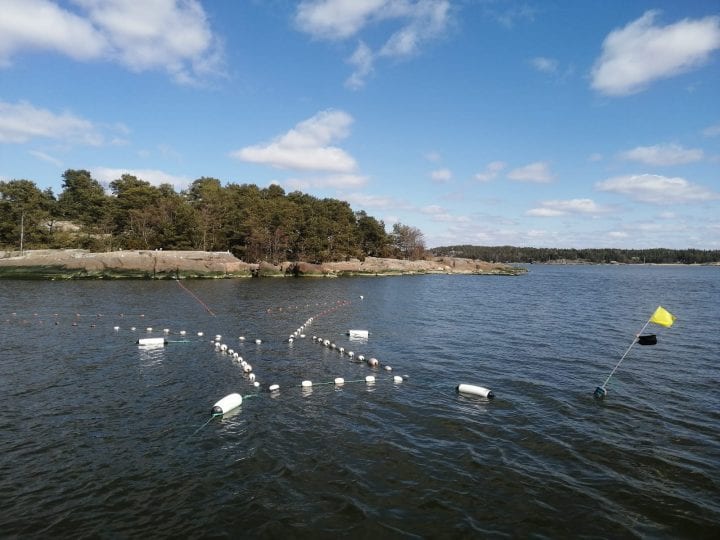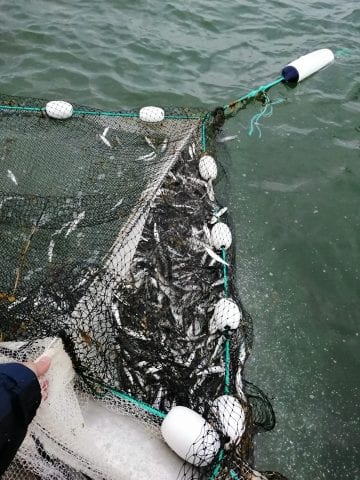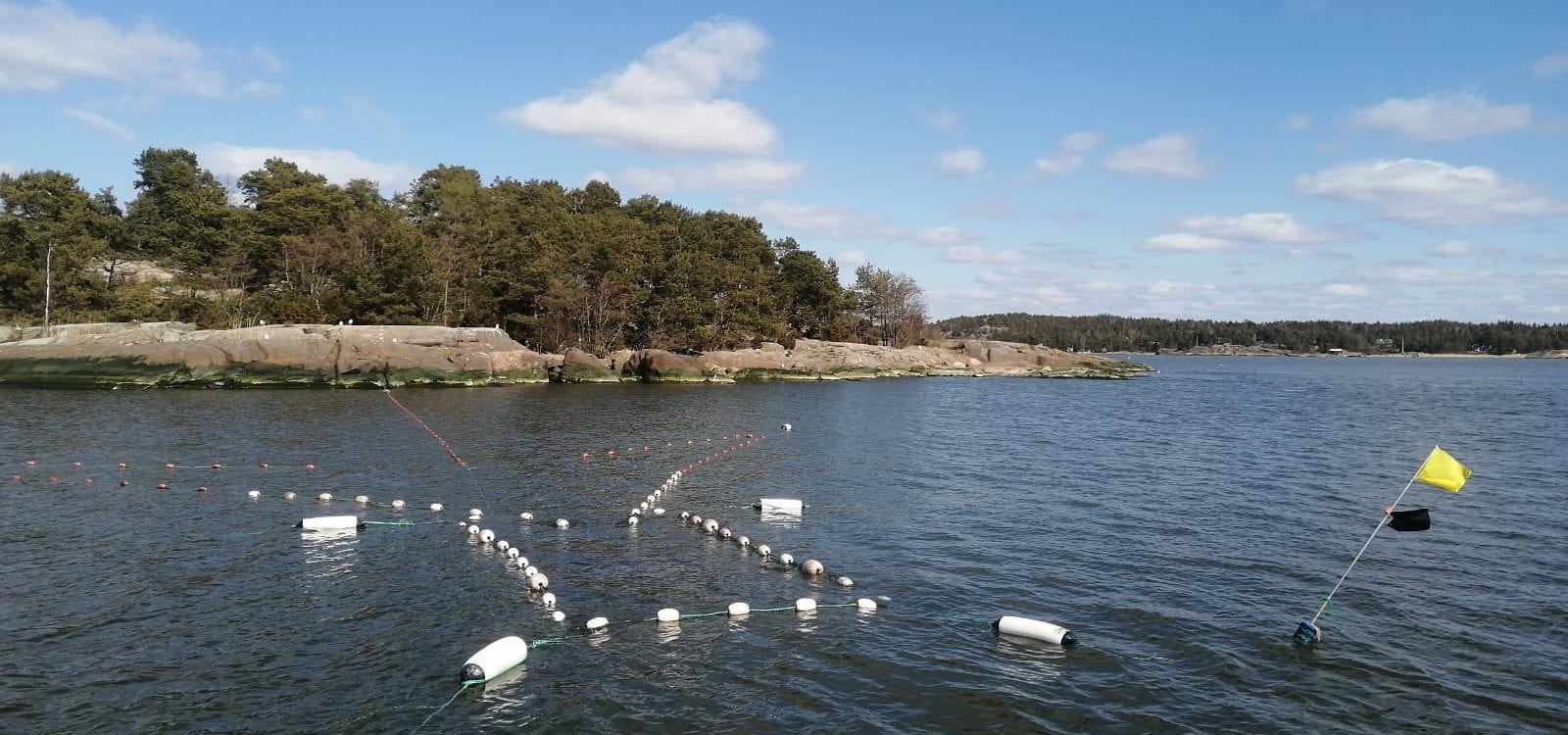Trap net fishery
Traditional Herring Fishing in the Archipelago Sea
In the Archipelago Sea, traditional herring fishing primarily involves the use of trap nets. These nets are anchored with ropes, weights, and stakes in nearshore locations, often close to herring spawning grounds. Over the past two decades, there has been a decline in the number of trap nets used and the total catch, but the efficiency of these nets has remained constant.

How Trap Nets Work
In the Archipelago Sea, trap nets are the main tool for catching spawning herring in the spring. They are set when herring are expected to begin spawning and continue to be used as long as it’s economically viable. These nets are custom-made for specific locations, considering factors like the seafloor, depth, and quality. Traditionally, they are anchored with long wooden stakes, but floating trap nets are also used in some areas. While the largest trap nets can hold up to 15-20 tons of herring, most are smaller in scale.
No Size or Age Discrimination
The mesh size of the trap nets in this area is around 12-13 mm, and they are generally considered non-selective gear. This means they catch herring of all sizes, ages, sexes, and reproductive stages. Even small herrings, about 10 cm in length, are captured in these nets.

Collaboration with Local Fishermen
Our herring project’s data has been collected in close collaboration with local fishermen. In the early 1980s, there were around a thousand trap nets in the Archipelago Sea. However, the traditional method of fishing for spawning herring has declined since then, leading to a decrease in trap net catch. Despite this decline, the catch per unit effort (CPUE) shows no decreasing trend and appears to depend on the size of the spawning stock in the Bothnian Sea.
Continuation of Research
In response to the decrease in commercial trap net fishing, in 2019, the Archipelago Research Institute acquired two smaller trap nets. These nets are now deployed near known spawning sites in the inner archipelago and are used for research purposes. This project was funded by the Southwestern Finland ELY-centre and the European Maritime and Fisheries Fund (EMFF) in collaboration with the Archipelago Sea Fisheries Action Group. The aim was not only to continue collecting spawning herring samples but also to pass on knowledge and skills from professional fishermen to students at Livia College.

Related publications and reports
- Jari Hänninen & Johannes Sahlsten (2020): Rysäkalastuksen tekniikka ja ammatillinen tietotaito silakan tutkimuksen käyttöön-pilottitutkimus 2019-2020 – väliraportti
[Hankenumero: 93977] (In Finnish). - Vahteri, P. & Vuorinen, I. 2001. The crash in Baltic herring (Clupea harengus membras L.) reproduction – a case study in the northern Airisto spawning grounds, Archipelago Sea S-W Finland. Baltic Sea Science Congress 2001, Abstract Volume. Stockholm University, Stockholm, Sweden.
- Griffin, F.J., Pillai, M. C., Vines, C. A., Kääriä, J., Hibbard-Robbins, T., Yanagimachi, R. & Cherr, G. N. 1998. Effects of salinity on sperm motility, fertilization, and development in the Pacific herring, Clupea pallasi. Biol. Bull. 194: 25-35.
- Kääriä, J., Rajasilta, M., Kurkilahti, M. & Soikkeli, M. 1997. Spawning bed selection by the Baltic herring (Clupea harengus membras) in the Archipelago Sea of SW Finland. – ICES J. mar. Sci. 54: 917-923.
- Rajasilta, M., Eklund, J. Hänninen, J., Kurkilahti, M., Kääriä, J. Rannikko, P. & Soikkeli, M. 1993. Spawning of herring (Clupea harengus membras L.) in the Archipelago Sea. – ICES J. mar. Sci. 50: 233-246.
- Rajasilta, M., Eklund, J., Kääriä, J. & Ranta-aho, K. 1989. The deposition and mortality of the eggs of the Baltic herring, Clupea harengus membras L., on different substrates in the south-west archipelago of Finland. – J. Fish. Biol. 34: 417-427.
- Rajasilta, M., Eklund, J., Kääriä, J. & Ranta-aho, K. 1989. The deposition and mortality of the eggs of the Baltic herring, Clupea harengus membras L., on different substrates in the south-west archipelago of Finland. – J. Fish. Biol. 34: 417-427.

